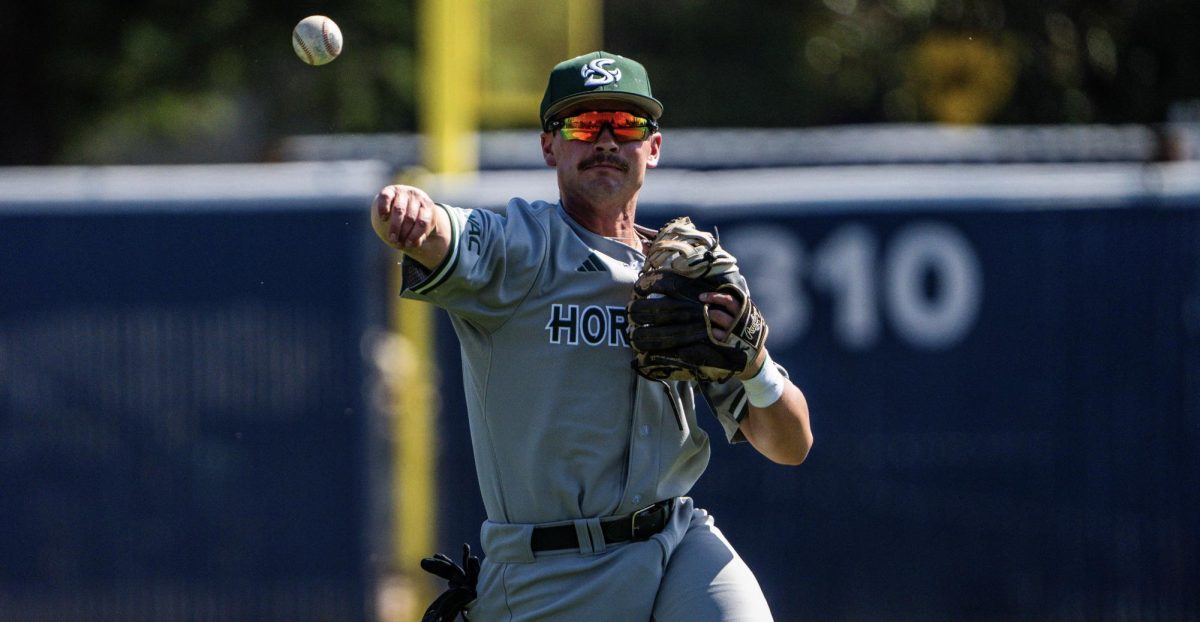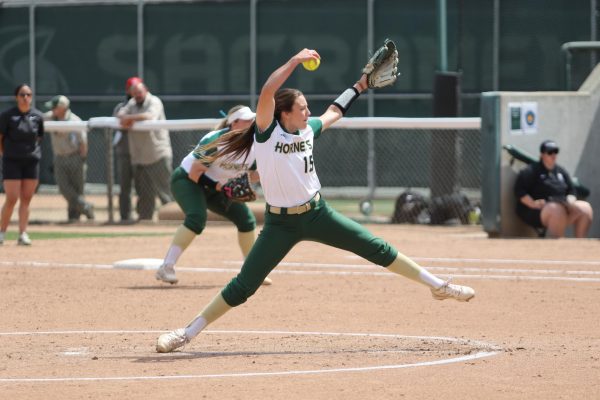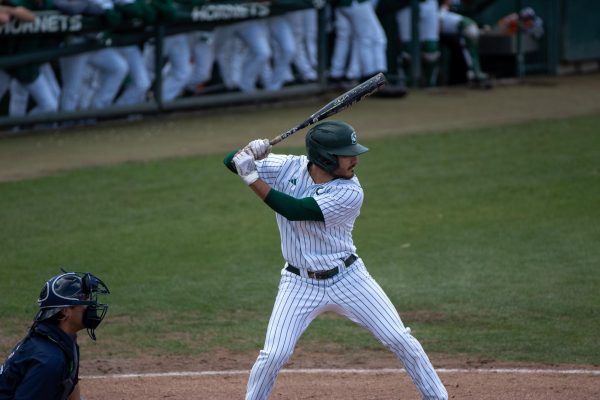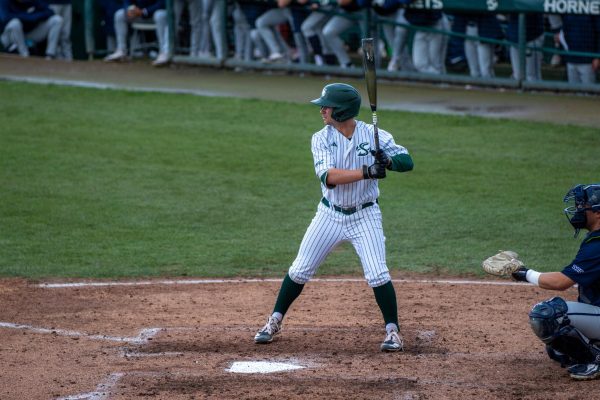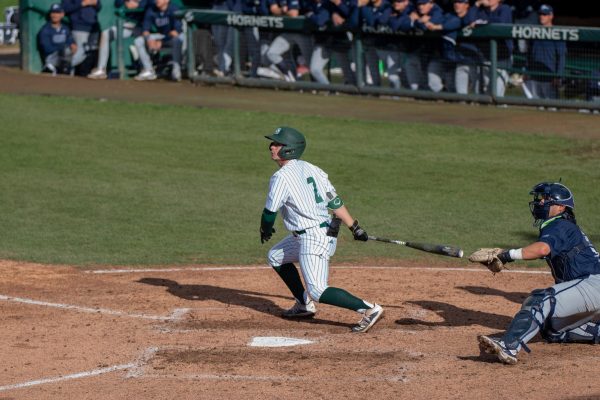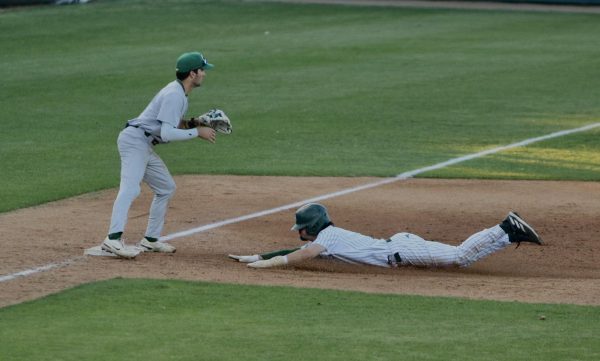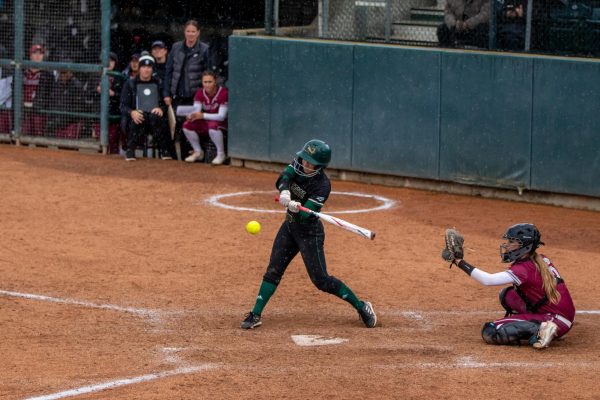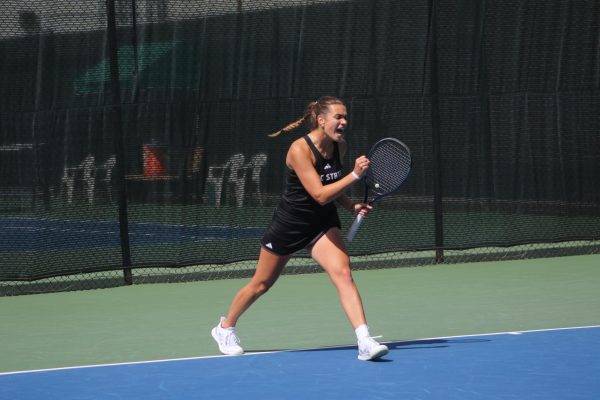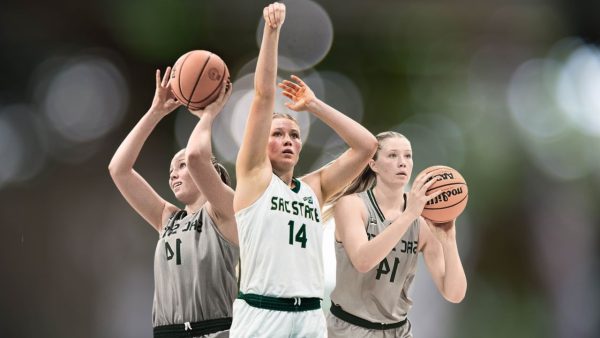Basketball’s Estrada uses new methods to heal quick
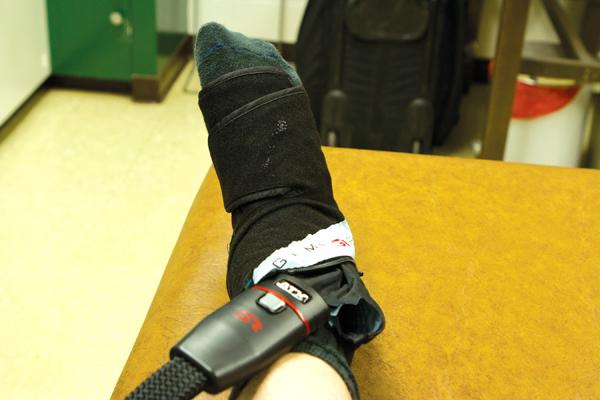
Junior Jordan Estrada of the Sacramento State men’s basketball team uses a device called Game Ready to recover from a high ankle sprain he suffered on Dec. 31 against the Weber State University Wildcats.
February 15, 2012
When junior guard Jordan Estrada went down with a high left ankle sprain in December, he left behind the bags of ice and tape to heal the injury and turned to a machine – the Game Ready system.
Estrada’s injury occurred in the second half during the Dec. 31 road game against Weber State University. The training staff and Estrada assessed the ankle and said they thought he had broken his foot, but later realized they misdiagnosed it and downgraded the injury to a high ankle sprain.
“It felt like a break,” Estrada said. “Our trainer and (Weber State’s) trainer said where my pain was I definitely broke it, but it was just a sprain. But with the Game Ready and the help of (Hornets’ Athletic) trainer Joe Ramos, they helped me get back as soon as possible.”
The recovery plan for this type of injury is four to six weeks, but high ankle sprains like Estrada’s can take months to heal, Ramos said.
“Four to six weeks is probably an average on a third-degree (sprain),” Ramos said. “I think (the Game Ready) took off a lot of time (for Estrada). Third-degrees are a little bit longer, especially a high ankle sprain. They have a tendency to take months because they don’t heal as quick.”
The Game Ready itself costs around $2,500 and the individual attachments range between $300 to $500, Ramos said.
The Hornets’ training staff has four additional pieces – one for a small foot, a big foot, a knee and a shoulder.
The machine runs on water and ice that is put into the back of it and cooled to 32 to 34 degrees Fahrenheit. The cold water is then funneled through the tube that leads to whichever piece is attached and then it compresses and ices the injured area.
Ramos said the process to get Estrada back required him to sit with the Game Ready on for 30 to 45 minutes per day in the morning and before and after practice.
On the road, Ramos said bringing the Game Ready with them costs too much to ship, but the other universities training staff’s help accommodate the Hornets when they arrive.
“We have a really good relationship with most of the trainers in the Big Sky Conference,” Ramos said. “We come in on Wednesday night to play on Friday. If we call in advance, they will open up their training room to us and if they have a Game Ready, they will let us use it.”
Estrada was on crutches for two to three days before he switched to the walking boot for the next two weeks.
They continued this process until the swelling subsided after about two or three weeks and he was able to put weight on his foot again.
Estrada was then eased back into shape as the trainers were cautious with him every step of the way.
He first started with walking without a boot and then moved into small amounts of running and cutting in practice until he felt he could run at full speed and rejoin the team.
Estrada missed five games because of the injury and was back almost four weeks later for the rematch with Weber State, which Ramos said was way ahead of schedule.
Head coach Brian Katz said seeing Estrada back so soon was nothing new to him because of how strong he is.
“I’m not really surprised at all,” Katz said. “He is a very, very tough kid and he has a (high) threshold for pain and he was so diligent in rehab and he was extremely aggressive.”
Ramos said Estrada could have been back a week earlier, but the Hornets’ training staff remained cautious not to hurt the ankle anymore.
Estrada has now been back for two weeks, but he said he is not at 100 percent.
“It gets to about 85 to 90 percent, but then I’ll tweak it throughout a practice or tweak it in a game and it will go back down to 75 percent,” Estrada said. “But for the most part, I can do the majority of things. Pretty much what is still difficult is trying to jump off that one foot, so if I explode and try and go hard off of it, just the pounding on it to try and explode is the last thing that will take about a month or so to get to 100 percent.”
Since he’s been back from injury, Estrada hasn’t been eased back into the games. He has averaged 23 minutes a game, which is five minutes above his season average and he has started four of the six games.
Estrada still walks and runs around with a limp, but the special tape job Ramos gives Estrada before practice and games gives him enough support to where he can play through the pain.
“(Ramos) does a real heavy-duty tape job,” Estrada said. “At the beginning of practice my foot is pretty much locked in, but after a while the tape loosens up and I have some mobility with it.”
Katz said getting Estrada back has helped the team.
“He means a lot,” Katz said. “He is a good overall player and he brings an attitude and toughness to our group and of course he is a good shooter. He has struggled a little bit at times, but he is a real threat to shoot the ball and I do believe that he will break out and have some big games shooting the ball, I really do. It is important to have him back.”
With the Hornets still in the hunt for the Big Sky Tournament, Estrada said the Game Ready was a major factor in his quick return to get back and help his team win.
“The Game Ready machine I say is the best thing ever invented to help with swelling,” Estrada said. “It’s 10 times better than just putting ice on.”
Josh Stanley can be reached at [email protected].








































